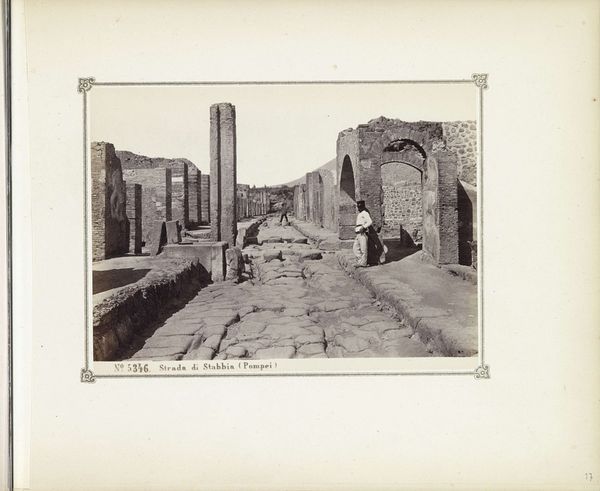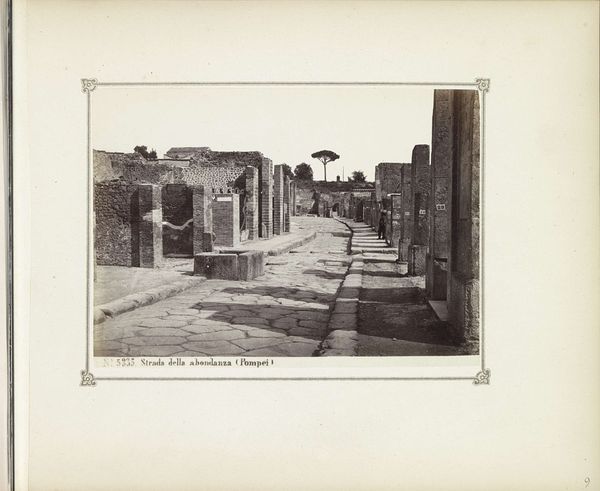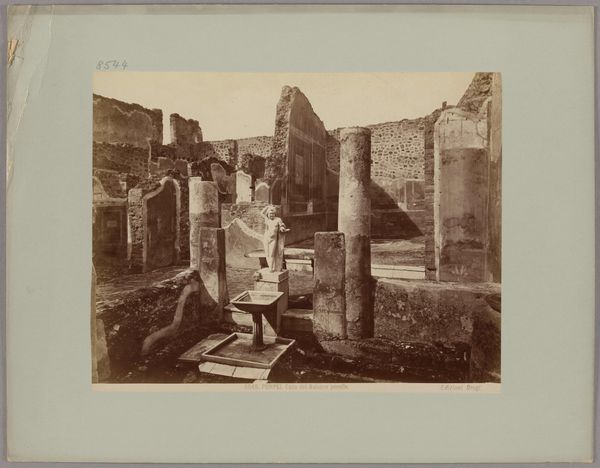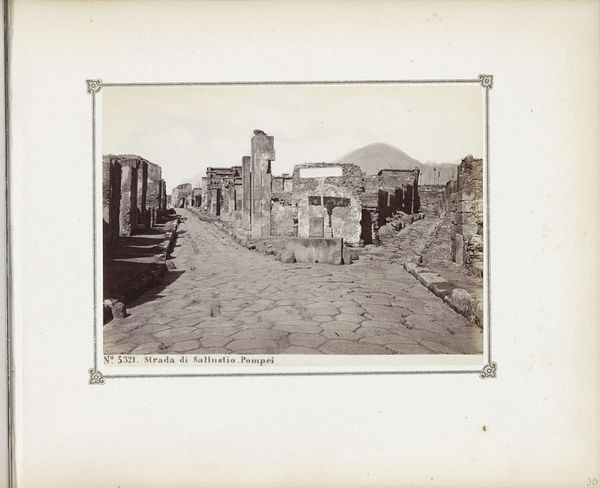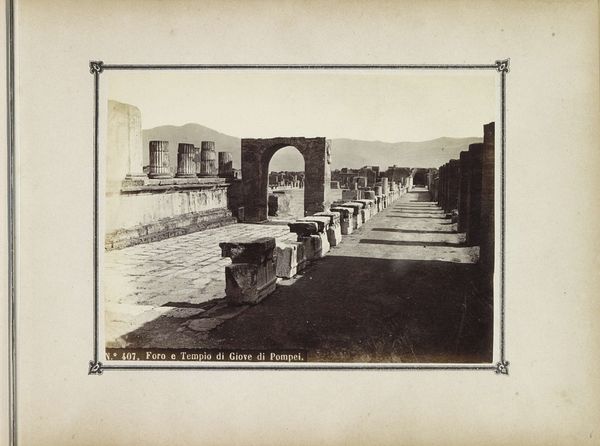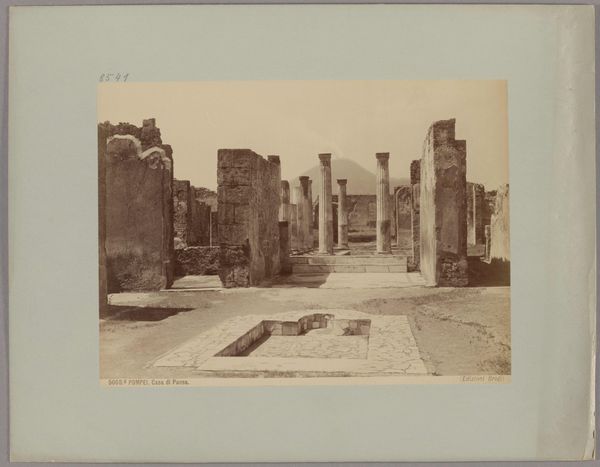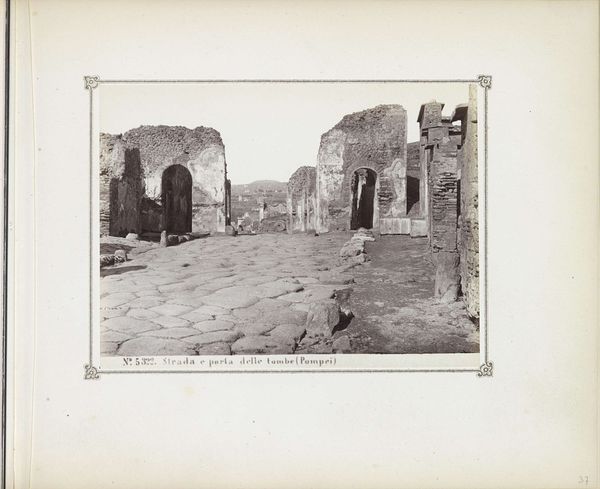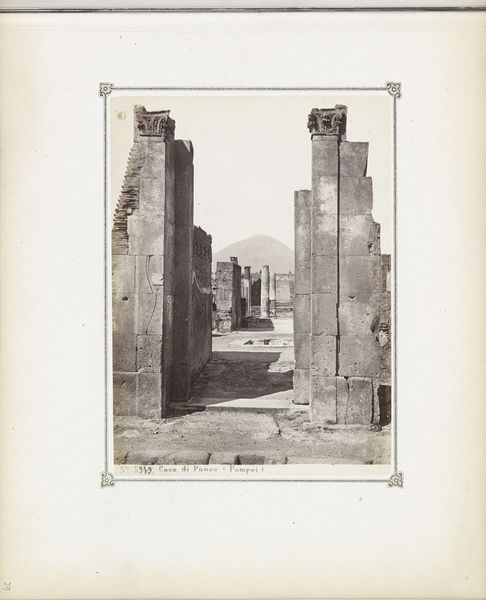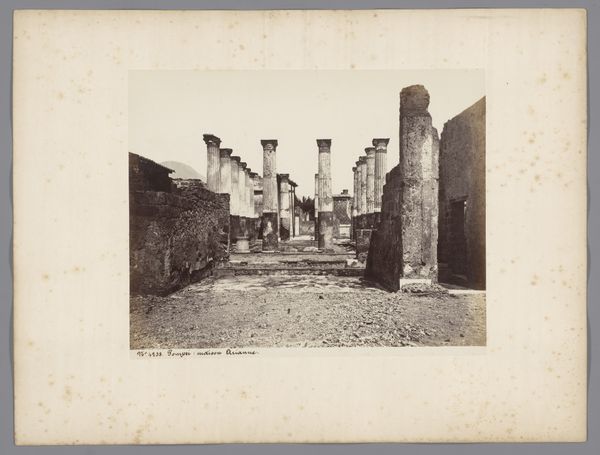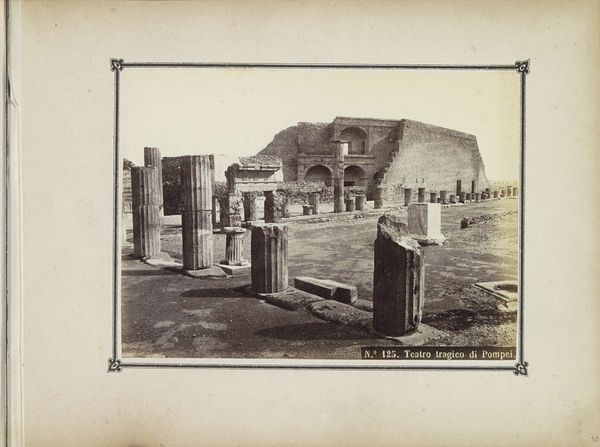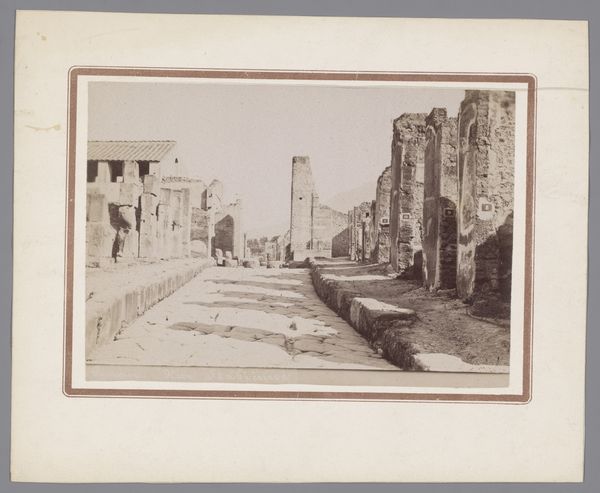
Restanten van gebouwen aan de Strada di Augustus in Pompeï c. 1860 - 1900
0:00
0:00
robertorive
Rijksmuseum
photography, site-specific, albumen-print
#
landscape
#
photography
#
ancient-mediterranean
#
site-specific
#
cityscape
#
history-painting
#
street
#
albumen-print
#
realism
Dimensions: height 100 mm, width 140 mm
Copyright: Rijks Museum: Open Domain
Editor: So, this is Roberto Rive's photograph, "Restanten van gebouwen aan de Strada di Augustus in Pompeï," taken sometime between 1860 and 1900. It's an albumen print, so it's got that warm, sepia tone, and it's strangely beautiful in its depiction of ruins. What strikes you most when you look at this? Curator: You know, I'm drawn to the quiet melancholy. It's not just a photo; it’s almost a tangible echo of time, isn't it? Imagine standing on that very street, the Strada di Augustus, feeling the weight of history pressing down. It is like a perfectly arranged stage set for a long-lost drama, frozen in time and light by the artist. Do you get the sense of being present but also impossibly distant? Editor: Definitely. It's like a ghost town caught in a snapshot. I am intrigued about this image; can we call this "realism" as one tag suggests? Curator: A superb observation and question. It's a realism filtered through time, memory, and the artist’s eye. In some ways it's like they have worked a magic that has gone back in time! The very act of photographing, then and now, changes things. But does knowing the subject is an archaeological site influence the work in a documentary or symbolic way? Editor: Maybe a bit of both? There is this artistic intent. The composition, the light... everything suggests something more profound than just documenting ruins. It’s evocative. Curator: Precisely! And thinking of photography's then-recent invention, imagine Rive choosing to capture not vibrant life, but these hushed, empty spaces. Is it not a sort of time travel? Or a quiet, thoughtful reflection on the ever-present dialogue between past and present, memory and ruin? Editor: I love that—a thoughtful reflection. I will certainly remember to bring that to my approach of understanding historical landscapes moving forward.
Comments
No comments
Be the first to comment and join the conversation on the ultimate creative platform.
